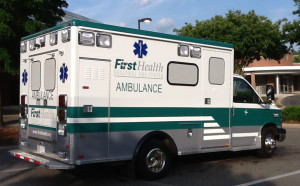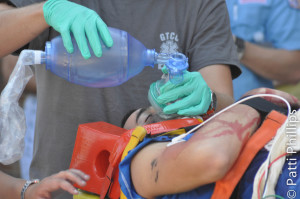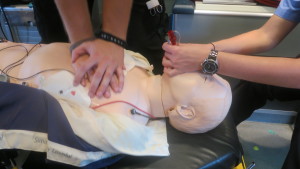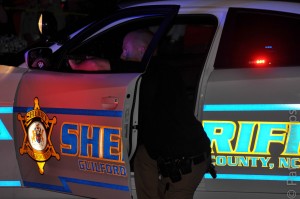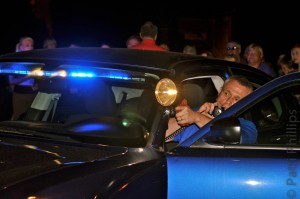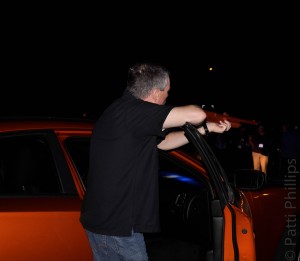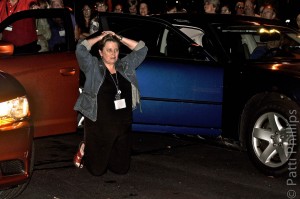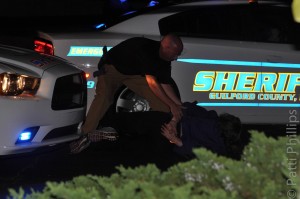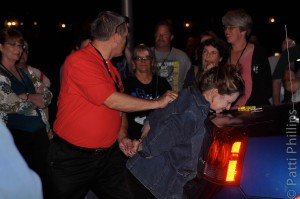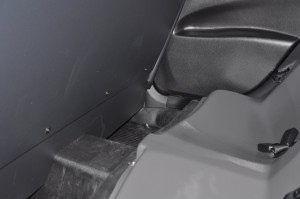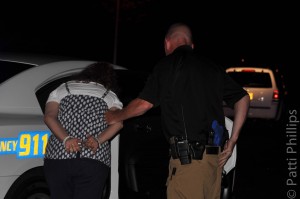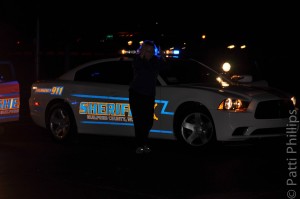KN, p. 189 “Fifth Anniversary Thank You from the Kerrians”
It’s with great pleasure that we thank you, the readers, for hanging out with us for five years.
We’ve taken some really amazing trips to American Civil War battlefields, endured fog and pouring rain on both American and international golf courses, been trapped in elevators, survived bomb scares, witnessed bloody crime scenes, and lived to tell the tales.
Some intriguing people have agreed to do interviews about their jobs and in the process, have opened the eyes of our readers far and wide about the rigors of law enforcement in its many forms.
Police Academies, Fire Fighter Academies, Emergency Medical Training Schools, Firearms Training sites, Criminal Investigation Facilities – have all generously allowed us to take photos and chat with the instructors at length. Fascinating stuff.
We’ve met with Visiting Detectives – an assortment that included a psychic detective, a vegetarian detective, and a time-traveling detective from the 1800s. Sheila chimed in while they worked on puzzling cases with me. The Vegetarian Detective brought brownies. Yum.
Kerrian’s Notebook, Volume 1, which included stories from 2011 and 2012 no longer available on the website, was published in response to the readership that wanted the (over 50) stories from the first year collected into one ebook. Don’t have your copy yet? Click on the link and find it at Amazon: http://www.amazon.com/dp/B00HI6YBDG
You’ve made the journey fun. And then some. 🙂
During the years, we kept track of which posts were the most popular, which ones you kept visiting over and over again. For research? For another laugh? To prove a point? For some of you, all three. Here is the result.
Click on the links and take a look at your Top 10 Favorite Kerrian’s Notebook posts in reverse order thru 2016:
- “Who are the Texas Rangers?” (p.144)
- “Are all handcuffs yellow?” (p.68)
- “What does a Texas Ranger do?” (p.145)
- “How big is that jail cell?” (p.51)
- “100 Ways to Die an Unnatural Death.” (p.100)
- “What does a firefighter wear?” (p.119)
- “I Like Pie.” (p.67)
- “How many bodies at the scene?” (p.87)
And the most popular post?
- “How to become a Texas Ranger.” (p.146)
Thank you, one and all! 🙂
Next time you’re in town, give us a call. We’re always happy to chat about the latest trip or the trickiest case. If you’re lucky, you might even meet one of the Visiting Detectives. There’s always a pot of coffee on and a piece of pie just begging to be eaten.
*Fingerprint photo taken by Patti Phillips at SIRCHIE, in Youngsville, North Carolina.
KN, p. 189 “Fifth Anniversary Thank You from the Kerrians” Read More »


